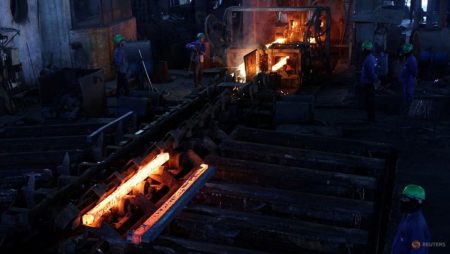In a significant legal battle in Ho Chi Minh City, real estate developer Lan, the founder of Van Thinh Phat Group, addressed the court regarding the crisis surrounding Saigon Commercial Bank (SCB). Expressing her distress over the mismanagement and losses incurred, Lan proposed a drastic move as a solution: “the quickest way” to repay the embezzled funds would be to liquidate SCB and sell their assets to settle debts owed to the State Bank of Vietnam (SBV) and the aggrieved public. Her statements highlighted not only her desire to take responsibility but also her frustration over perceived wastefulness involving national resources. During the proceedings, she conveyed embarrassment and sorrow at being implicated in such serious charges.
Despite holding only 5 percent of SCB shares on record, court findings indicated that Lan exerted control over more than 90 percent through various networks of family and acquaintances. This revelation raised questions about the governance and oversight within SCB, exacerbating the turmoil surrounding the financial institution. The situation became dire enough for the State Bank to intervene with financial injections aimed at stabilizing SCB, although specific figures regarding these bailouts remain undisclosed. The gravity of the embezzlement scandal prompted broader scrutiny of banking practices and the accountability of those in power within Vietnam’s financial sector.
Among the extensive assets associated with Lan and her business conglomerate are prominent properties in Ho Chi Minh City, including a shopping mall, a harbor, and high-end housing developments. These holdings underline the significant economic footprint of Lan’s business group in one of Vietnam’s most vibrant commercial centers. The court’s attention to these assets indicates an effort to understand the full scope of the financial manipulations, assessing both the scale of the alleged crimes and the potential recovery of lost assets should any liquidation occur.
In a landmark ruling delivered in April, Lan was found guilty of embezzling an astounding US$12.5 billion. Prosecutors, however, pointed to total damages reaching US$27 billion, a staggering sum that equates to approximately 6 percent of Vietnam’s projected GDP for 2023. This scale of financial crime marks one of the most severe cases of corporate fraud in the country, emphasizing the systemic vulnerabilities within its financial institutions and spurring a wider reckoning with corruption in Vietnam. The substantial figures involved reflect a failure in regulatory oversight, which may lead to lasting changes in how financial operations are conducted across the nation.
The corruption scandal cascaded through the ranks, resulting in the arrests of Lan and dozens of other individuals, including senior officials from the central bank as part of an aggressive nationwide anti-corruption drive labeled the “burning furnace.” This campaign has ensnared numerous officials and elite business figures, indicating a shift in the political climate concerning accountability and transparency among Vietnam’s leadership. The scandal not only highlights the risks associated with corporate governance but also signals a broader social push against corruption that has beleaguered sectors of the Vietnamese economy.
As the legal proceedings continue, a cohort of 47 other defendants has sought reduced sentences, underscoring the complexity and emotional toll of this high-profile case. In a related legal outcome, Lan was convicted of money laundering in another trial and subsequently sentenced to life imprisonment. This ongoing saga reflects not just the individual failings within SCB, but also the pressing need for systemic reform in Vietnam’s banking and business practices to restore public confidence and ensure the integrity of national financial resources. As the trials progress and the appeal requests unfold, the repercussions of this case will likely resonate throughout the Vietnamese economy for years to come, shaping future policies and legislative measures aimed at combating corruption and enhancing corporate governance.










